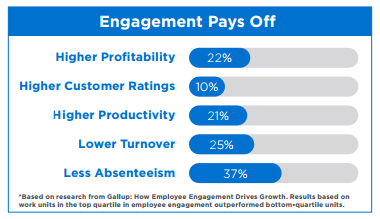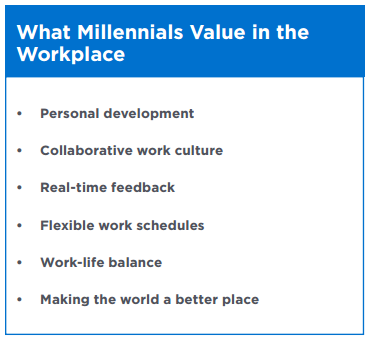May 23, 2017 | Peter Corless
May 23, 2017 | Peter Corless
 High turnover isn’t something new to this industry. Before the great recession of 2008, health care providers faced both a nursing shortage and high employee turnover. In response, senior care providers placed a higher priority on creating programs dedicated to employee retention. But as labor pressures eased after the recession, financial pressures increased, thereby causing providers to eliminate investing in engagement programs so they could stay financially viable.
High turnover isn’t something new to this industry. Before the great recession of 2008, health care providers faced both a nursing shortage and high employee turnover. In response, senior care providers placed a higher priority on creating programs dedicated to employee retention. But as labor pressures eased after the recession, financial pressures increased, thereby causing providers to eliminate investing in engagement programs so they could stay financially viable.
The skilled nursing industry faces a crisis unlike any other in recent history, so providers can no longer put engagement initiatives on the backburner. Both labor and financial challenges have converged to create a ‘super cell’ capable of wiping out many organizations.
 To survive, providers must focus on employee engagement in today’s market to remain profitable. Why? The cost of turnover is exorbitant, costing a typical 100-employee facility over $200,000 annually.1
To survive, providers must focus on employee engagement in today’s market to remain profitable. Why? The cost of turnover is exorbitant, costing a typical 100-employee facility over $200,000 annually.1
In my past experience as vice president of human resources at some of the country’s largest post-acute healthcare companies, I’ve seen first-hand that implementing employee engagement strategies produces results.
The key is to put into effect engagement strategies that meet the expectations of today’s multigenerational workforce. We can’t assume that everyone has the same background, experiences, motivation and temperament. In particular, we need to look at the millennials’ perspective, and let that be the driving force behind many of the personnel decisions that we’re making. Millennials currently make up over half of the workforce, so it's critical that providers adapt to attract and retain them.
 Given that much of the senior care industry still follows historical organizational models and personnel policies and hierarchies, there’s no question that providers are challenged in the task of bringing millennials to the industry and combating turnover. But trying to fit millennials into existing operational systems, instead of adapting to be more millennial friendly, could prove detrimental.
Given that much of the senior care industry still follows historical organizational models and personnel policies and hierarchies, there’s no question that providers are challenged in the task of bringing millennials to the industry and combating turnover. But trying to fit millennials into existing operational systems, instead of adapting to be more millennial friendly, could prove detrimental.
Nearly 78% of recent hires by senior care providers are millennials, yet only 35% of providers indicated that they have adapted their operations toward embracing millennials.
Here are three practices to help you engage and retain millennials:
1. Measure Staff Satisfaction Frequently
Millennials are already beginning to impact how employers approach performance reviews. Most organizations conduct annual or bi-annual employee surveys, but the reality is, they should measure satisfaction much more frequently. According to a study by Forbes, 80% of millennials want feedback in real-time instead of the traditional performance review2.
It all comes down to providing a channel for regular feedback and communication among managers, their teams and employees, making frequency essential on all fronts. Simply checking in with employees daily could lead to quick wins. If an employee didn’t have the best day, it could simply be that the supplies were not stocked during the previous shift. If left unaddressed, this could cause animosity, and ultimately lead to turnover. That check-in, though, can prevent such a snowball effect.
What’s more, measuring satisfaction frequently allows executives the opportunity to help their managers. If some employees aren’t as satisfied as others, leaders can work with their specific managers to hone in on pain points. This is especially helpful for new managers who may need coaching.
2. Focus on Technology
According to a survey by The Center for Generational Kinetics, almost half of millennials expect to be able to complete key business transactions from their mobile device or tablet.
Instead of limiting employees' use of personal mobile devices, try using their love of technology to your advantage. Adopt mobile technology for clinical, operational and HR systems. This can provide the transparency and information needed for employees to efficiently handle their responsibilities, their life and the care of residents.
The use of technology is a key component to implementing engagement policies and programs. When it comes to retaining employees, it’s not about doing one thing extremely well—it’s about doing many things extremely well and in a systematic, repeatable fashion. This is where technology comes into play. Having automation and visibility into where to focus engagement efforts help leadership and supervisors to identify and quickly act on areas for improvement.
3. Facilitate Employees’ Work-life Balance
Millennials highly prioritize work-life balance, and therefore seek out work environments that do the same. They’re not as solely driven, for the most part, by the self-worth that comes with the accomplishment of the job. Their view of self-worth comes from how they see themselves and others. A job well done is good, but they’re also looking beyond that; at their quality of life and how they impact society.
“One tactic to ensure work-life balance is to involve employees in scheduling,” says Irene Fleshner, Principal of Reno, Davis & Assoc. Inc. and Senior Vice President of Strategic Nursing Initiatives for Genesis HealthCare. “Doing so doesn’t have to be drastic, but slowly and surely giving employees some say in when they work can make a significant difference.”
Utilizing mobile technology for staff scheduling, managing call-offs and shift changes, as well as providing more frequent communications can help further engage employees with your organization. Management should allow employees to request their preferred shifts and take this into consideration when the staff schedule is built. This will make them feel like they have some control over their schedule, a practice that today's workforce values. The OnShift mobile scheduling app gives staff access to their schedule 24/7 and even allows them to request time off and swap shifts.
Millennials are the cornerstone of today’s workforce and the key to your future success. By making employee engagement a priority, as providers have in the past, and refining the techniques used to meet the expectations of today’s workforce, the industry will not only be able to survive this ‘perfect storm,’ but thrive by outperforming the competition.
1Calculated based on an estimated 40% turnover rate with a $5,000 replacement cost per employee.
2What Millennials Want In The Workplace (And Why You Should Start Giving It To Them), Rob Asghar, 2014.
Subscribe to the OnShift Blog
Recent Posts
Categories
About Peter Corless
Peter Corless is Executive Vice President of Enterprise Development for OnShift. Peter is a recognized HR leader in post-acute care and is well-known for his achievements at some of the country’s largest post-acute care organizations, including Kindred Healthcare and Genesis HealthCare. As an experienced, chief administrative and human resources officer within these organizations, he developed strategies that reduced turnover, improved recruiting and hiring strategies, and reduced labor costs.
See for yourself why thousands of providers rely on OnShift’s innovative software for recruitment, hiring, workforce management, pay and engagement. Request your personalized demo today.
